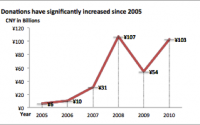Get on the Same Page with Strategy

Today let’s start from a commonly misinterpreted word “strategy”. A “strategic plan” or “strahtegic discussion” is often the starting point for international collaborations.
Let’s imagine this: You are from the west, and traveling to China to discuss cooperation strategy with a prospect Chinese partner. Both parties are sincere in making the collaboration work. You have spent a full day with the Chinese counterpart. Everything has been set up with great care – meetings, meals, entertainment, logistics, and you may have also made a few site visits, or met with a couple government officials. You and the Chinese partner have talked about a few areas you can together work on, but nothing concrete has been decided. At the dinner party, your Chinese partner raises the glass and proposes a toast,” for a successful start of our cooperation.” While you greatly appreciate the hospitality, you are confused, “what success? What cooperation?”
Sounds familiar?
For westerners, strategy means a specific plan to get from A to B, with full consideration on external and internal environment, goals, resources, process, check points etc.; for Chinese, strategy is more like a vision or about tactics, and it’s good enough to start with a rough idea on where to head, since action plans can be developed on the go.
Why Chinese have such a different view on strategy? We may look at the question from three perspectives.
First, from a psychological and ethnical perspective, Chinese often adopt a more holistic view while westerners tend to have a linear thinking, and Chinese are more likely to see relations. Kare Anderson described an experiment in one of her recent articles[1].
“A developmental psychologist showed three pictures to children — a cow, a chicken and some grass. He asked children from America which two of the pictures belonged together. Most of them grouped the cow and chicken together because they were both objects in the same category of animals. Chinese children on the other hand tended to group the cow and grass together because ‘cows eat grass’ — they focused on the relationship between two objects rather than the objects themselves.”
In the same article, through another experiment psychologist Richard E. Nisbett concluded that East Asians focus on relationships while Westerners tend to see isolated objects rather than the connections between them.
Some researchers have attributed the connection recognition ability to Chinese pictographic writing system. Anyway, the implication here is to understand why Chinese often start with a big idea while many westerners tend to divide up issues into small pieces[2]. And, the hospitality part in the imaginary situation, yes, for Chinese, that’s part of the picture too.
Secondly, from a cultural perspective, heavily influenced by iChing and Taoism teaching, Chinese view changes as constant and see luck play an important role. Although sayings on changes are pervasive in the west – “Plans are made to change” “Changes always go beyond plans”-Chinese live them. Chinese are not really big on plans. Even when plans are made, they are often not thorough or specific by western standards. Meanwhile, many Chinese believe in “what will be, will be”, so there is no use resisting or striving against obstacles. This “going with the flow” attitude can largely explain the flexibility and resilience observed among many Chinese individuals and organizations.
Lastly, from a social perspective, China has gone through a lot of turbulence and changes in the last 150 years, thus people have been in a constant insecure and uncertain state. Especially in the last 50 years, fundamental changes have occurred in almost every aspect of people’s life, whether good or bad, which have led to the building-up of anxiety and uncertainly among people and in the society. This social trend has reinforced people’s hesitation to make long-term fixed plans. You never know what tomorrow may have in store – this is not a cliché in China.
In summary, Chinese are often able to see connections thus develop a big-pictured vision. However, at the same time, Chinese are not natural planners. Even Deng XiaoPing, who is usually seen as the leading strategist and architect of China’s economic reform, didn’t start out with a defined plan when he “designed” the reform[3]. He envisioned a population out of poverty and a country with prosperity, but the stated strategy was to allow some people in some region to get rich first, then to drive the rest for common prosperity. That’s it. But Deng XiaoPing observed trends, then had the government endorse those that had worked or might work. Land Reform and Special Economic Zones are acclaimed as Deng’s most profound achievement, but neither of them was set up in Deng’s original plan. Among Deng’s most frequently quoted sayings are “Cross the river by feeling the stones” “White cat or black cat, it’s a good cat as long as it catches mice.”
Although Chinese are no stranger to Deng XiaoPing’s approaches, not all westerners feel comfortable moving forward with such a great degree of ambiguity. When I was working for an American manufacturer in Shanghai, we were constantly approached by Chinese manufacturers with joint-venture proposals. Their proposal was often simple and straightforward – “with our manufacturing facility and labor and your raw materials and technology, we can lower the manufacturing cost of your product, and take up a much larger market share in China and may even export products back to the US”. Some more sophisticated ones may come up with some market predictions. But to my American boss, things were way more complicated than that simple idea – cost along the value chain, quality control, staffing, responsibility allocation, cultural alignment, impact on business at home etc. Consequently we have never set up any JV even after rounds of serious discussions and numerous limousine trips and dinner parties. Some of these Chinese enterprises did move forward on their own, one becoming the biggest in the industry. Sometimes I do wonder how it could have been if we had gone with their proposal.
All right, now that we know westerners and Chinese have different views on strategy, which is better? You may hate this, but I will say it depends on situations and tasks. In an environment with increasing volatility and growing need for collaboration, great value can be found in Chinese’s ability to see a big picture and to quickly adapt in various situations. However, lacking a well-defined plan could also lead to prematurely giving up on a goal, missing the target, detouring or wasting resources. When you are crossing river by feeling the stone, there is good chance that you would fall into the water and never get to the other side of the river!
In the past few years, I have also had the privilege of facilitating some studying/exploring tours where American groups visiting different companies or organizations in China. It’s my observation that a lot of efficiency was lost in the strategic planning process when people are not on the same page with “strategy”. Looking back, I realize in some cases, collaborations could have been achieved, or achieved earlier, if we had had a better understanding toward the approaches of each party.
In today’s world, collaboration becomes not only desirable but also imperative. As someone who has experienced both successful and failed international cooperation, while it takes much more than “strategy” to make collaboration work, I would like to share a few thoughts on at least setting your next endeavor off to a good start:
- Be aware of the differences in the perceptions and approaches when people talk about strategy. If you can observe the difference, you are in a better position to deal with it more effectively.
- Start with defined goals. Some organizations may start by examining what each party has and what they can do together with their shared resources. I would propose another approach in the cross-border collaborative space by starting from the end. The underlying assumption for any collaboration initiatives is the existence of shared interest and goals. While Chinese may contribute to setting a big picture, westerners can certainly help push the goals to be better defined. For example, both parties may express the goal as to increase the understanding between two organizations. This is not enough until both parties have agreed on how to define “understanding”, how we know whether we have increased the understandings. In this process, some other important questions will inevitably be answered, such as why we should choose this goal over another. This approach will help both parties stay on the same page.
- Following the defined goals, start with projects. Chinese would love to map out grand plans from the outset, but for first timer collaborators, grand plans are bound to have a great level of ambiguity that westerners may shun away from. Starting from a project within the framework of defined goals will help both parties feel more comfortable moving forward, establish trust along the process, and build momentum for future collaboration.
Do you have a story on cross-border collaboration? If you do, could you share with us your insights on the “strategy” part?
[1] http://blogs.hbr.org/cs/2012/06/what_captures_your_attention_c.html?awid=6490918475390351685-3271
[2] Gallo, Frank T., Business Leadership in China, John Wiley & Sons (Asia) Pte. Ltd., 2011
[3] Bouee, Charles-Edouard, China’s Management Revolution, Roland Berger Strategy Consultants GmbH 2011



